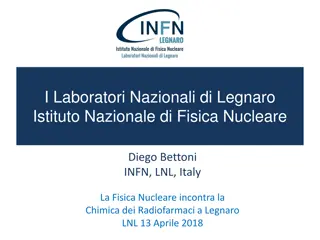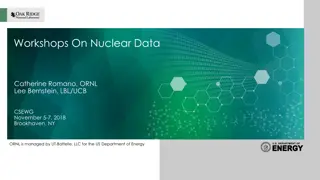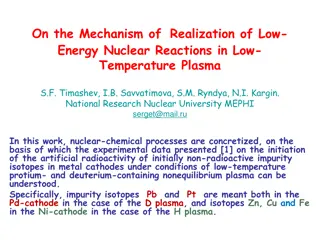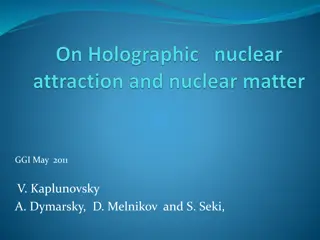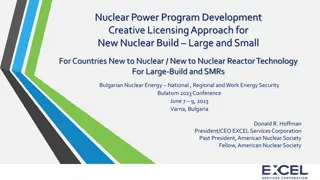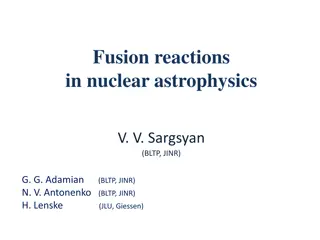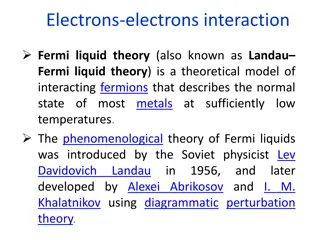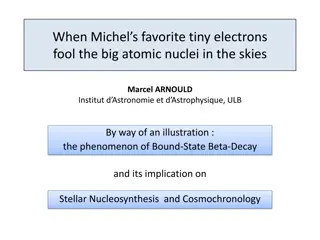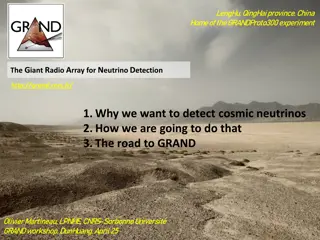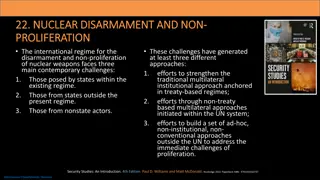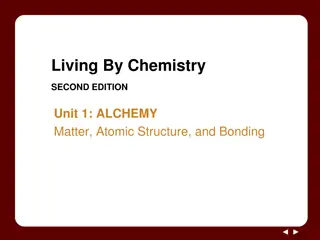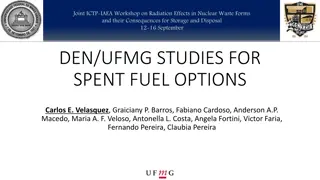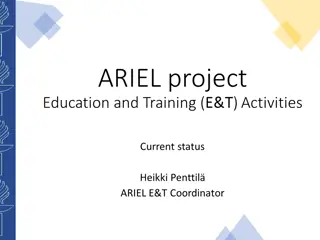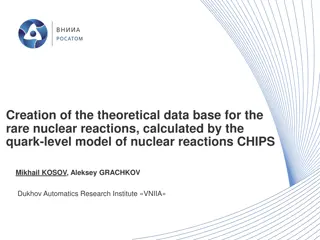Advances in Giant Nuclear Monopole Excitations and Applications to Astrophysics
This insightful material delves into the advancements in understanding Giant Nuclear Monopole Excitations and their significance in Multi-messenger Astrophysics. It covers basic facts about nuclear compressibility, experimental results from the mid-seventies, systematics related to energy-weighted sum rules and nuclear excitation energies. The text further explores methods for determining nuclear parameters like K, considering the dependence on N-Z ratio, and presents results obtained from various studies.
Download Presentation

Please find below an Image/Link to download the presentation.
The content on the website is provided AS IS for your information and personal use only. It may not be sold, licensed, or shared on other websites without obtaining consent from the author.If you encounter any issues during the download, it is possible that the publisher has removed the file from their server.
You are allowed to download the files provided on this website for personal or commercial use, subject to the condition that they are used lawfully. All files are the property of their respective owners.
The content on the website is provided AS IS for your information and personal use only. It may not be sold, licensed, or shared on other websites without obtaining consent from the author.
E N D
Presentation Transcript
Welcome to Advances on Giant Nuclear Monopole Excitations and Applications to Multi-messenger Astrophysics Yorick Blumenfeld, Gianluca Col , Umesh Garg, Elias Khan and Marine Vandebrouck
Some Basic facts (continued) The compressibility of a nucleus A, KA, is related to the energy of the GMR by with The GMR (like every GR) is defined by EISGMR, and %EWSR To define precisely EISGMR one needs to observe a large %EWSR To obtain experimentally the %EWSR one compares data with a reaction model (DWBA) which includes the transition density (scaling model): The experimental error on EISGMR comes mainly from high energy strength difficult to observe and for which the transition density may not follow the above formula
Experimental results Discovered in the mid-seventies First observation claimed at IPN Orsay synchrocyclotron but never published except in annual report ( , ) scattering at KVI Groningen (Harakeh, Van der Woude) 3He scattering at ISN Grenoble (Buenerd) ( , ) scattering at Texas A&M (Youngblood)
Systematics % EWSR 140 100 60 20 EISGMR(MeV) 20 16 12 0 50 100 150 200
How do we get K? K K Fit the K parameters on experimental data: Very Imprecise Base on RPA calculations and compare with experiment J.P. Blaizot, D. Gogny and B. Grammaticos NPA265 (1976) 315 J.P Blaizot Phys. Rep. 64 (1980) 171 K K = 210 = 210 30 MeV 30 MeV Already in 1976 Already in 1976 We have not done much better since with We have not done much better since with some scatter depending on the type of some scatter depending on the type of theory (non theory (non- -relativistic or relativistic) relativistic or relativistic) Colo Colo et al (2004) give et al (2004) give K K = = 240 240 10 10 MeV MeV
Dependence on N-Z : K K K is for symmetric nuclear matter. This is not the case for a neutron is for symmetric nuclear matter. This is not the case for a neutron star for example. So one wants to measure the dependence on N star for example. So one wants to measure the dependence on N- -Z. Z. Measure along an isotopic chain Grand Raiden Osaka D.T. Khoa et al. NPA602 (1996) 98
Results for K Similar result with Cd isotopes T. Li, U. Garg et al. PRL 99 (2007) 162503
Questions Can our knowledge of K K Do soft monopole modes exist? Can they teach us something about Do soft monopole modes exist? Can they teach us something about compressibility? compressibility? Is it worth the effort to measure the GMR in unstable nuclei? Is it worth the effort to measure the GMR in unstable nuclei? If so, what are the best techniques and the most interesting nuclei? If so, what are the best techniques and the most interesting nuclei? What does the GMR teach us about the nuclear EOS and how does it help us What does the GMR teach us about the nuclear EOS and how does it help us understand astrophysical phenomena? understand astrophysical phenomena? 4 Discussion sessions should help us to answer: 4 Discussion sessions should help us to answer: Experment Experment (M. (M. Harakeh Harakeh) ) Theory (H. Sagawa) Theory (H. Sagawa) Astrophysics (J. Astrophysics (J. M Margueron argueron) ) Future (E. Khan) Future (E. Khan) Enjoy the workshop! be improved? be improved?


![[PDF⚡READ❤ONLINE] Cosmology and Particle Astrophysics (Wiley-Praxis Series in As](/thumb/21627/pdf-read-online-cosmology-and-particle-astrophysics-wiley-praxis-series-in-as.jpg)




